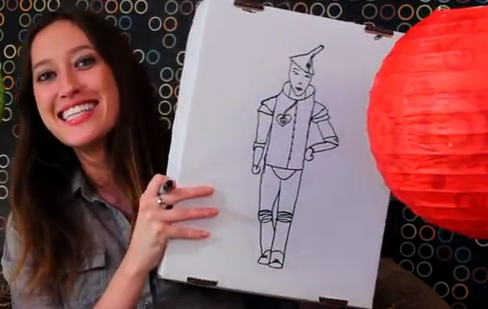Submitted by New Media Rights last modified Mon, 10/26/2015 - 4:46pm
If someone scans an existing object that they didn’t create, do they get a copyright in the file?
No, not from just scanning it. Copyright protection is not granted for copies of creative works made by someone other than the original works copyright owner, even if those copies took time and skill to produce. Copyright law only protects original creative works. This is also true for 2D scanning in the real world. If a person scans a page of a book that doesn’t mean they own the copyright to that page of text.
The same is true for objects that have patented and trademarked elements. Scanning the patented or trademarked objects does not grant the person doing the scanning a patent or trademark rights in the file.
If the creator of an object scans the object they create, would they also own the copyright on the file?
Maybe. It really depends on whether the object they created contains protectable creative expression (protected) or simply functional and useful (not protected).
For objects that contain creative expression (sculptures, artistic engravings, action figures etc) the scan is a copy of the work. One of the rights granted to copyright holders is the exclusive right to copy the work. Although it’s unclear whether this scan would be separately copyrightable is an open question. On one hand scans of copyrighted works that incorporate pictures, written description or stories within the file may be separately copyrightable derivative works (that is a work based on another work). But that copyright would only cover the new additions to the work beyond the scan. However, if the file really is just a scan it’s unlikely to qualify as a derivative work because it really is only a copy of the work.
If a creator scans a useful object like a simple chair, then even if they created the chair they still wouldn’t have a copyright in the file because they are scanning and creating a copy of something that isn’t subject to copyright. In addition the file itself wouldn’t be subject to copyright because it is nothing more than a list of instructions for creating a useful object.
If the object is subject to a patent or trademark, merely scanning the object and creating a file will not create any additional ownership right beyond the pre-existing patent or trademark and copyright, if applicable.
When might scanning an object infringe another persons copyright, patent or trademark?
Copyright: If the entire object to be scanned is copyrighted, then scanning the object and creating a file without permission is a violation of the object creator’s copyright. For example, scanning a sculpture currently protected by copyright law and creating a CAD file based on that would violate the sculptor’s rights under copyright law, which allows them the exclusive right to make copies of their sculpture. Keep in mind that some sculptures may be in the public domain, especially sculptures created before 1923. This helpful table can also be used to help figure out if a sculpture is in the public domain.
If only some of the object to be scanned is copyrightable and the rest is useful, then scanning and creating a file based on the creative and non-useful part of the object without permission violates the object creator’s copyright. However, if you only scan the purely useful parts of the object and create a file based on you scan, there is no copyright infringement. For example, let’s assume the object is a standard bed frame with a headboard in the shape of a roaring lion. Scanning the frame would not infringe the copyright owners copyright because the frame is useful and not subject to copyright law at all. However, scanning the decorative roaring lion part of the headboard would be copyright infringement because the roaring lion can be separated from the bed frame and stand alone as its own piece of art.
Patent: If the entire object to be scanned is patented simply scanning the object and making a CAD file without permission wouldn’t violate the patent. However, sharing that file or using it to print the patented object would.
If only some of the object is patented, again scanning the patented piece(s) would not by itself be considered patent infringement. However, sharing that file or using it to print the patented object would.
Keep in mind that there are “combination patents” which are made up of several unpatented pieces, but when put together create a patented combination. If you’re interested in scanning useful objects that may be patented, it might be a good idea to talk to a patent attorney.
Trademark: Because trademark law is intended to protect the public from confusion about product origin, trademark law simply doesn’t come into play when items are scanned for purely personal use. A further step – distribution to the public – is required for violation of the trademark. See “3D printing trademark basics.”
If you have any other questions regarding 3D printing and the law please don’t hesitate to contact New Media Rights via our contact form.




